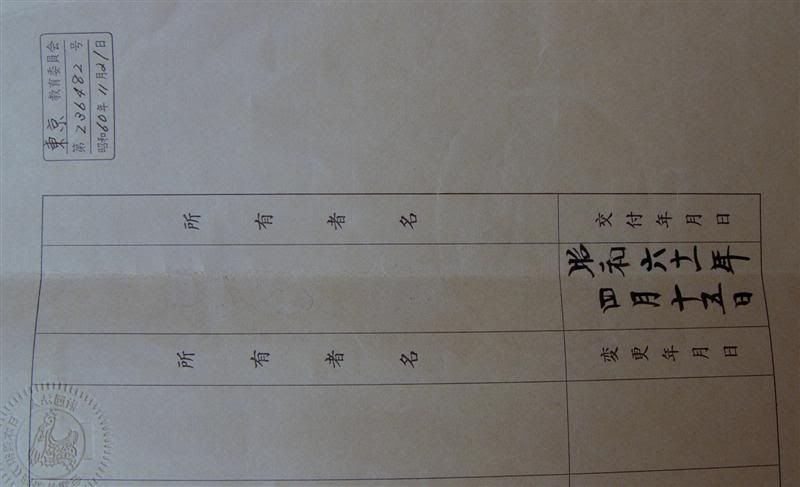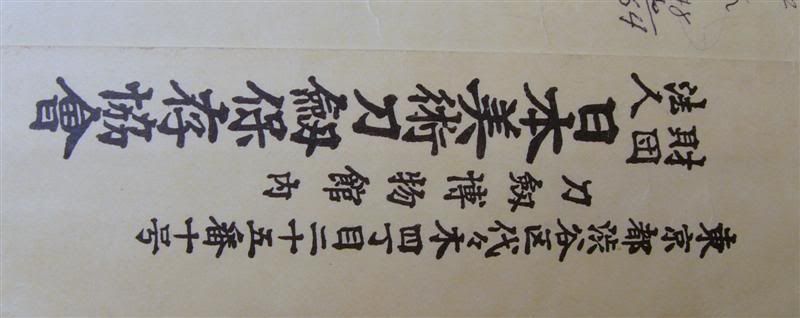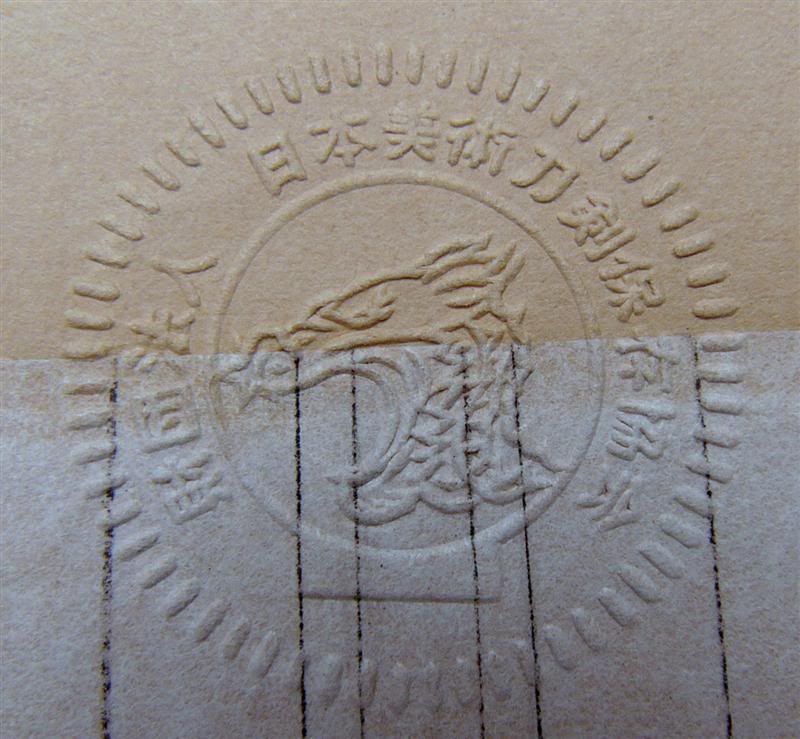
 |
|
|
#1 |
|
Member
Join Date: Mar 2005
Location: USA Georgia
Posts: 1,599
|
A signed and dated katana with the NBTHK papers. This is the hardest sword I have ever tried to photograph. The 6 pictures you see here are a distillate from over 60 exposures and I am still not happy. I need to build a light tent to get this better.
I am trying PhotoBucket. Sized the pictures to 800 wide, don't know why they ran over. Maybe I need to go to 640? Polish is modern Japan. Here are some interesting features about this katana. This smith is from "Satsuma" province in Japan. He is the 63th generations sword-maker. His ancestors estimated start forging sword in 1306. The smith is working on a Tachi style from Koto period. One side is signed "Namihira Yukiyasu" and the other side is a date when he forged this sword. 1861 in our calendar. It is awarded the paper by NBTHK in Showa 60th year. Showa is started 1926. So it is papered in 1985 in Japan. Here is how the Japanese calculated the year. 1926 + 60 year = 1986 minus 1 = 1985. The Western method of counting the first year is 1927 but the Japanese counting 1926 is the first year. The NBTHK awarded this sword for "Tokubetsu Hozon" paper There are three kind of papers: Hozon, Tokubetsu and Juyo. . Hozon means "Worthy of preservation". Tokubetsu hozon means "Especially worthy of preservation". Juyo means "Important worthy of preservation". Will post some more info on the basic features, later. I am just learning Nihonto.  This is a storage scabbard and handle (Shirasaya) specifically made for it. The blade in katanas is always carried and stored with the cutting edge up.  The boshi is very important and a difficult part of the blade to make.  The tang bears information about the maker and date. It should never be cleaned as the patination helps date it. The characters are only really visible in a rubbing.  Graceful line of the hamon.  Another picture showing the hamon.  And finally the overall unmounted blade. Hope that you like it. |
|
|

|
|
|
#2 |
|
Member
Join Date: Feb 2007
Location: Canada
Posts: 11
|
Very nice sword Bill. Maybe you already know but don't ever remove any rust on the tang. You'll lose half the value of the sword in doing so. It's an area used to test the proven age.
... My bad. I see you've already stated it. Sorry, I love these swords too, and I guess over zealous to their preservation like many other collectable asian swords. |
|
|

|
|
|
#3 |
|
Member
Join Date: Mar 2005
Location: USA Georgia
Posts: 1,599
|
A little more inforamtion.
It has suguha (straight temperline) with Ara-nie majiri. The hada (grain structure) is Muji (pearl skin) with ko-itame. The sori is curve at the waist level like Koto style. The boshi is Ko-Maru (small turn around). The paperwork shows this is not a Tokubetsu hozon, but a Kanteisho Hozon. It is also a bit earlier than 1861. Somewhere between 1848 and 1854. Here is the origami for your consideration. Here are some of the pictures of my paperwork.  Overall  Watermarks  Back of paper  Envelope  Close-up of main info (sorry about the color shift)  Seal |
|
|

|
|
|
#4 |
|
Member
Join Date: Dec 2004
Posts: 1,712
|
It has a very elegant shape Bill , skillfull hamon as well.
I found this website about NBTHK papers that I found interesting. http://www.nihontocraft.com/japanese_sword_papers.html I understand they are more valued than those from the other organisations? Spiral |
|
|

|
|
|
#5 |
|
Member
Join Date: Dec 2006
Posts: 194
|
hi bill
it is realy an nice sword in a very good condition. i like satsuma swords, but i wonder why looks the tang so old. at normal you can see at an nihon-to made in the end of the shinto time an very clear yasurime (file marks at the tang) , at the tang is not such an dark rustpatination and the mei is very good and clear visible. these tang shows for me like made in the early shinto time. in the past i was an member in the european section from the nbthk and so i was in the happy position to see a lot of good swords from the other members and so i can say, it is the first time that i see such an "old looked" tang at such an young sword! at normal i would say you make an mistake to think it is from 1861 but you have an paper from the nbthk. there are many questions for me!!! stefan |
|
|

|
 |
|
|